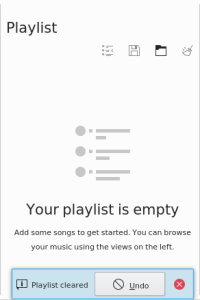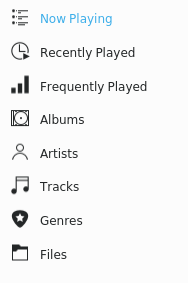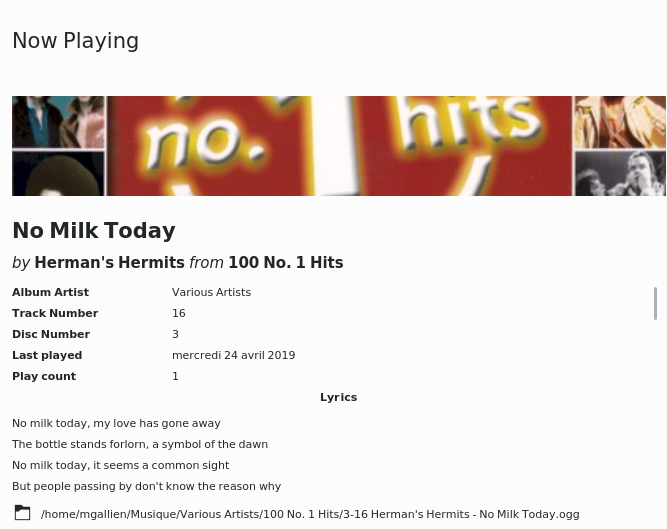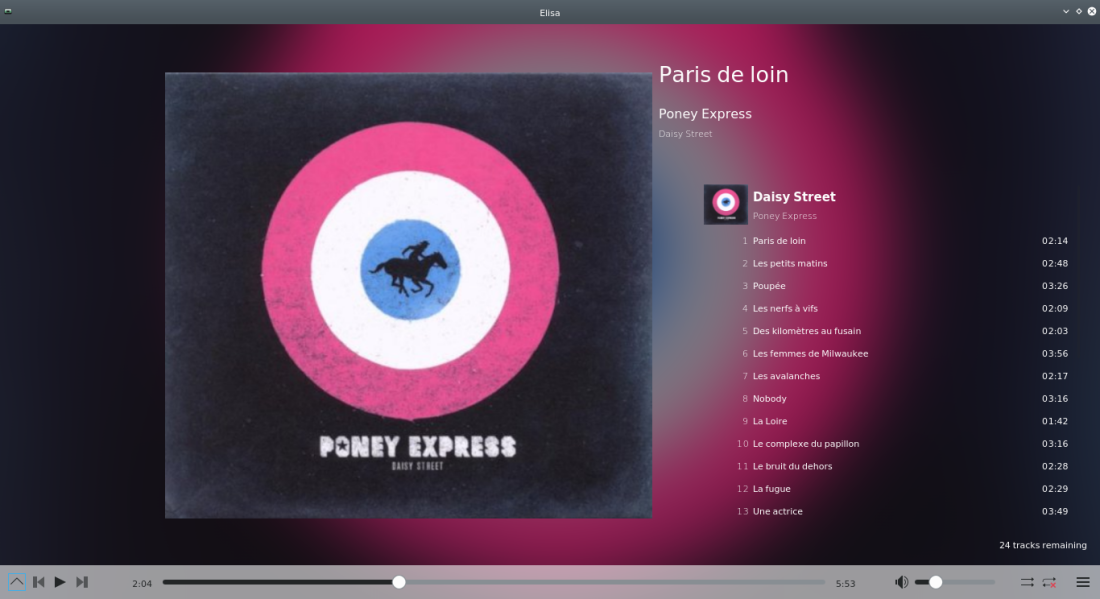Elisa is a music player developed by the KDE community that strives to be simple and nice to use. We also recognize that we need a flexible product to account for the different workflows and use-cases of our users.
We focus on a very good integration with the Plasma desktop of the KDE community without compromising the support for other platforms (other Linux desktop environments, Windows and Android).
We are creating a reliable product that is a joy to use and respects our users privacy. As such, we will prefer to support online services where users are in control of their data.
In the part 1 of this series, I have talked about the following additions:
- libvlc as a music player alternative to QtMultimedia ;
- progress shown directly on the taskbar entry ;
- an improved party mode.
Today, I would like to introduce more features that will be in the future 0.4 stable version.
Undo Support when Playlist is Cleared
Elisa is currently a player with a strong focus on the current playlist. It is quite possible to have spent some time to compose a playlist. This is something valuable for the user.
What if suddenly, you hit the wrong button and lose all your work ?
A notification will be shown to undo this operation. This feature has been contributed by Jérôme Guidon. Thanks a lot for its first contribution !

New Browsing Views
It is now possible to browse the most recently played tracks or the most frequently played ones.
The idea is to show the 50 last played tracks or the 50 most frequently played tracks.
The currently implemented browsing modes are the following:
It is planned to add more modes but that requires a way for the user to configure it to its liking before adding more.
A New Context View
Starting from a very good design work by Diego Gangl, the new context view is now able to show some of the metadata from the currently playing track like the composer, lyricist, play count, lyrics …

The current support for lyrics comes from a suggestion from Nate Graham. It is only supporting lyrics written in the track metadata. Support for online services will come in the next releases.
Optimizations And Reduced Memory Usage
Elisa is now loading the views fully on demand. It means that no memory or processing power is needed until one clicks on one of them. It also means that they no longer take resources when they are hidden.
One of the consequences is a better startup time and reduced memory usage. Another one is that when loading your music a busy indicator is shown to help understand what happen.
The model that is used to show your music is also now completely generic and should allow a much greater extensibility and customization.
One of my long term goal is to offer a way to fully customize the browsing of music to the user liking or type of music or …
Conclusion
Now is a very good time to get involved as the next version is being stabilized. You can help with code, bug reporting or triaging, documentation …
Thanks a lot to all contributors to this project be a feature, a fix, ideas, reported bugs …
Thanks a lot to the KDE community that is really providing very useful and powerful tools to project like this one.
The easiest way to do that is by using flatpak or Windows installers produced by the KDE continuous build servers. I now that some distributions also have package built on top of Git.

